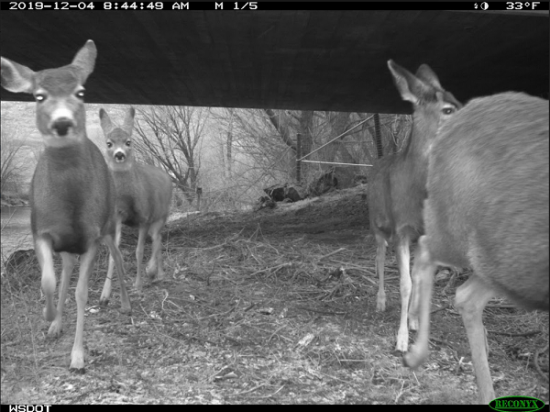Early Hwy. 97 Work Promising, But State Funding Would Really Reduce Roadkill, Reps Say
Mule deer and other critters are taking to a recently renovated path underneath a busy North-central Washington highway, providing a glimpse of how more wildlife fencing and crossings could protect wildlife and drivers in a high roadkill location.
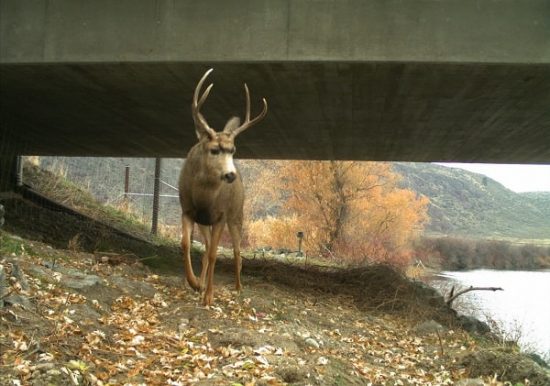
As local lawmakers call on fellow legislators to provide $8.7 million next year for phase one of the Safe Passage 97 project, volunteers using donated funds are producing results right now at the Janis Bridge over the Okanogan River.
“They’re using it a lot,” attests Jay Kehne about the deer. “I was standing there when a DOT driver pulls up. It was the guy who picks up the carcasses and he came over and I said, ‘What do you think?’ And he said, ‘Best dang thing that ever happened. I had hardly any.’”
After state funding for the first 4-mile stretch disappointingly fell through last year despite a budget surplus, crews from the Okanogan Chapter of the Mule Deer Foundation chapter, Colville Confederated Tribes and Conservation Northwest still wanted to get started.
So after consulting with the Department of Transportation, they used $260,000 from private sources to clear out brush and grade the passage underneath the south end of the bridge for wildlife, as well as build three-tenths of a mile of highwayside fence to guide animals to the safe crossing.
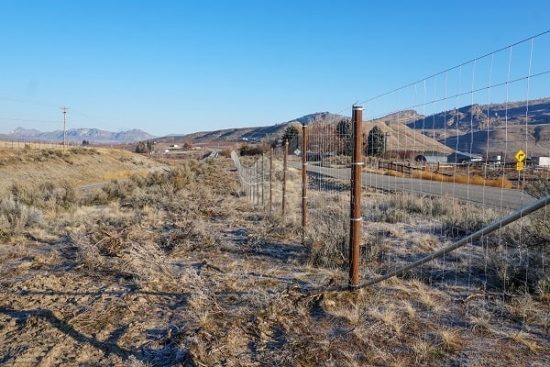
Kehne, a hunter who works for CNW, is the former Fish and Wildlife Commission member who helped lead the charge to OK salvaging roadkill in Washington, and this particular stretch of blacktop north of his home near Omak is one of the worst in the state for deer.
Nearly 1,500 bucks, does and fawns were killed in a 16-mile span between 2004 and 2013, according to WashDOT mapping. But thrice as many – and possibly five to 10 times that figure, if new Utah research Kehne has read is accurate – were likely struck and limped into the surrounding hills before succumbing.
Between state and county law enforcement responding to crashes, WSDOT cleaning them up, medical bills, car repairs and the value of the deer themselves, the cost to the public adds up to about $2.5 million a year, it is estimated.
Kehne says that $2 million a mile is about how much the overall, multiphase 8.5-mile project that includes more fencing, cattle guards, gates, “deer escapes” and five more undercrossings is expected to cost and which would help prevent an as many a 244 deer-vehicle crashes annually.
In Wyoming — among the states leading the way on wildlife crossings — the Department of Game and Fish estimates that a mix of underpasses and fencing as well as overpasses “can reduce crashes by 80-90 percent and ensure animals can safely cross roads to get to seasonal ranges.”
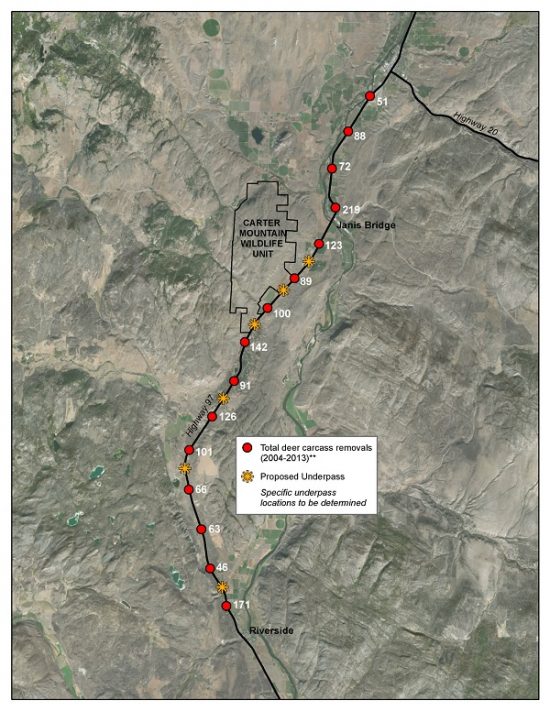
THE BASIC PROBLEM IS THAT A KEY north-south transportation and community corridor intersects with a critical west-east mule deer migration route to winter range, the importance of which has only grown for the herd in recent years.
“That’s some of the last – since 2015, since our major fires – that’s some of the last winter feed left in there,” said Oren Jensen of Tanglewood Guides during an appearance last Thursday on Fish Hunt Northwest. “There is still greasewood, there is still sagebrush, stuff that’s going to stay out of the snow, be sustainable for those mule deer, and that’s why it draws a lot of them.”
WDFW’s recently released 2019 Game Status and Trend Report terms the loss of winter shrub forage due to the Okanogan Complex and North Star Fires “the major management concern in the northern three-fourths of the zone.”
Extra antlerless permits were issued and between that and two tougher winter, the size of the deer herd is now more in line with what the habitat can support, though unfortunately for hunters that means fewer bucks in the short term.
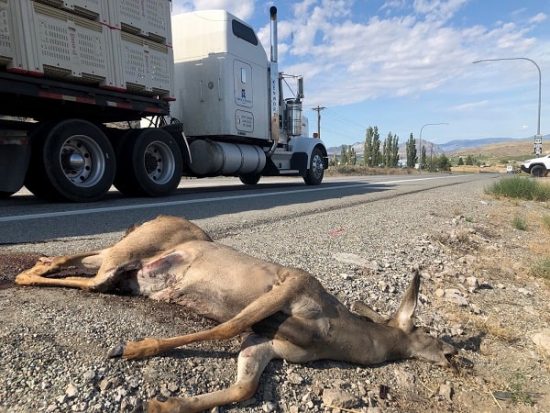
But it also highlights the importance of providing safer ways for deer to get from one side of Highway 97 to the other.
“Does, fawns, bucks, bobcats, skunks, coyotes, a cougar, tomcats,” says Kehne, reeling off the names of species that have been seen using the new Janis Bridge undercrossing.
“Just right offhand, it’s working great. The cameras are showing that,” he says.
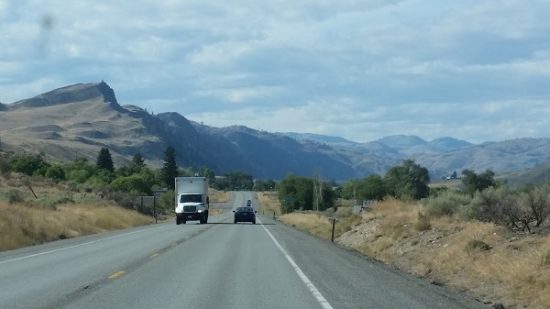
Another six-tenths of a mile of fencing is set to be strung this spring.
“But state funding is needed to complete the Safe Passage 97 project,” write two Northcentral Washington representatives in a recent letter to colleagues.
Phases one and two, which when complete would protect drivers and deer from Janis Bridge south to the town of Riverside, is estimated to cost $17.54 million. Finishing the work would also align with the state’s lofty goal of reducing highway deaths and injuries to zero by 2030.

So as the 2020 legislature draws to its close, state House transportation committee leaders Reps. Jake Fey (D-Tacoma) and Andrew Barkis (R-Lacey) are being asked to help fund Safe Passage 97 in 2021’s roads package.
“There is tremendous support for this project from a broad array of groups,” Reps. Joel Kretz (R-Wauconda) and Jacquelin Maycumber (R-Republic) wrote them earlier this month, “including the City of Omak, Okanogan County Commissioners, the Colville Confederated Tribes, Freight Mobility Strategic Investment Board, Central Washington Latino Community Fund, Okanogan Tourism Council, conservation groups, and dozens more.”
“Thank you kindly for considering this important public safety project for rural Washington,” Kretz and Maycumber add.
The deer, other wildlife and hunters would appreciate it too.
